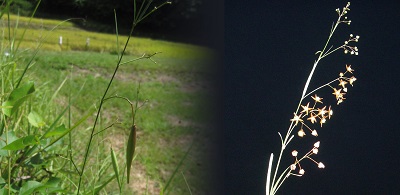Japanese researchers develop strategy to improve reproductive success for endangered plants
A team of researchers from Kyoto University and Kobe University found that mowing before the flowering period of endangered grassland plants enhances their reproductive success, but mowing during the flowering period decreases genetic diversity and reproductive ability. This result, recently published in Agriculture, Ecosystems and Environment , could guide future land management practices to help maintain rare plant populations.
Changes in the land management of agricultural areas, reflecting diminishing rural lifestyles and differences in practices such as grazing and mowing, have already reduced the diversity of rare grassland plants in Europe and Asia. Human disturbance of plants during their flowering and fruiting seasons results in fewer flowers, less pollination, and consequently, less seed production. This can lower the variety of genes within already isolated populations. Further changes to land management may then lead to extinction if a plant is unable to adapt to a changed environment because of a limited genetic makeup.
"Little has been known about the effect of changes in timing of land management practices on reproductive success and genetic diversity in endangered grassland species," explains Naoyuki Nakahama from Kyoto University. "We therefore looked at the effects of established mowing timing on these features of a representative rare grassland herb that flowers during summer and autumn."
Mowing during peak flowering and fruiting periods was found to significantly decrease genetic diversity and reproductive success, most likely through reducing flower and fruit quantities. Conversely, mowing before flowering and growing periods increased the plant's reproductive success.
"Up to three-quarters of endangered Japanese grassland herbs share their flowering season with the plant studied in this research," continues Nakahama. "Therefore, mowing in the winter or spring rather than in the summer or autumn is likely to help conserve many rare species."

Vincetoxicum pycnostelma, a rare grassland herb that flowers during summer and autumn
Paper Information
[DOI] http://dx.doi.org/10.1016/j.agee.2016.01.029
[KURENAI ACCESS URL] http://hdl.handle.net/2433/204553
Naoyuki Nakahama, Kei Uchida, Atushi Ushimaru, Yuji Isagi
"Timing of mowing influences genetic diversity and reproductive success in endangered semi-natural grassland plants"
Agriculture, Ecosystems and Environment , 1 April 2016





